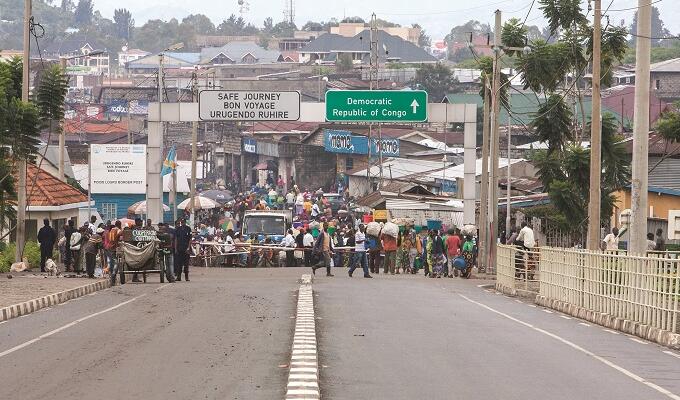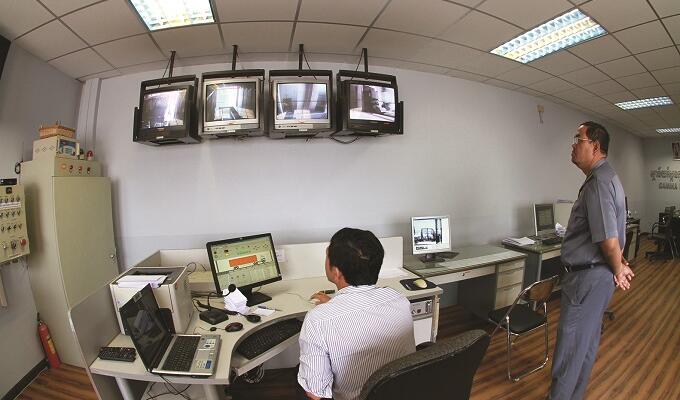

Connecting for development: the World Bank’s approach to Aid for Trade
A central feature of contemporary trade governance is the focus on its contribution to development. A key corollary is the acknowledgement that developing nations – especially least developed countries (LDCs) – require a range of support from the donor community to meaningfully profit from closer integration into world markets, reap the rewards of parallel domestic reform efforts and derive greater benefits from more active participation in trade negotiations.
The 2017 edition of the World Trade Organization’s (WTO) Global Aid for Trade Review usefully recalls the overriding importance of connectivity for purposes of inclusive and sustainable development. Being and staying connected allows nations and traders to adapt and respond to changing demand conditions, comply with evolving regulatory requirements and overcome what for many can be a triple tyranny of size, distance from markets and inadequate transport infrastructure.
Aid for Trade represents one of the most tangible development dividends emerging from collaboration among WTO members. Aid for Trade assistance has helped developing countries take fuller advantage of market openings by reducing trade costs and overcoming obstacles hampering cross-border transactions, including poor infrastructure, trade-inhibiting regulations and policy disincentives. It also works to cushion the domestic adjustment costs inherent to any new liberalization, a particularly important dimension at a time when the very idea of engaging world markets faces increasingly vocal opposition.
Still, Aid for Trade can be a vital catalyst in reducing economic displacement related to modernization, a recent study coauthored by the World Bank Group, International Monetary Fund and WTO showed (‘Making Trade An Engine of Growth for All: The Case for Trade and for Policies to Facilitate Adjustment’).
The World Bank Group (WBG) multipronged Aid for Trade programme focuses precisely on helping governments and private operators address and overcome obstacles limiting their connection to regional and world markets. The programme targets a number of soft and hard constraints weighing on trade-led integration, including concessional lending to low-income countries and non-concessional lending to middle-income countries for trade-related projects.
The WBG’s assistance further involves policy advice and technical assistance aimed at helping governments deliver better trade results. It does so by strengthening the institutional and regulatory fabric of client countries, for instance through Diagnostic Trade Integration Studies (DTIS) undertaken in the context of LDCs. The WBG is also a key catalyst in mobilizing resources for a broad range of capacity-building efforts. It provides many of the above services in partnership with leading donor agencies and development partners, leveraging resources through close cooperation with the International Trade Centre, the United Nations Conference on Trade and Development, the United Nations Development Programme and the WTO, to name just a few.
Finally, through the International Finance Corporation (IFC), the WBG invests directly in private-sector activities with a view to spurring productive capacity and increased exports of both goods and services. Examples of IFC funding include trade finance, equity participation in promising private-sector enterprises and infrastructure upgrading.
TRADE FACILITATIONNo area of Aid for Trade support illustrates the WBG’s focus on connectivity better than efforts to help client countries implement the WTO’s path-breaking Trade Facilitation Agreement (TFA). Its recent entry into force calls for stepped-up efforts targeted at further reducing trade costs; scaling up the quality of logistics supply chains and transport infrastructure; and enhancing the commercial friendliness of borders.
Doing so requires a complementary mix of hard and soft Aid for Trade product offerings spanning infrastructure financing, the strengthening of logistics performance, adoption of pro-competitive regulatory reforms and digitization of customs procedures. Initiatives aimed at gender-neutral border practices, given the key role of micro-trading enterprises headed by women, are required as well. A key component of WBG Aid for Trade support in this area has been the Trade Facilitation Support Program (TFSP) launched in June 2014 and co-financed by seven leading donors: Australia, Canada, the European Union, Norway, Switzerland, the United Kingdom and the United States. Since its launch, over 60 countries have reached out for technical assistance and support to implement the TFA.
GROWTH SECTORSA second example of Aid for Trade assistance connecting traders to markets is the WBG’s involvement, alongside several development partners, in the WTO’s Standards and Trade Development Facility (STDF). Its aim is to promote safe trade in foodstuffs, minimize transaction costs and prevent the spread of pests or diseases among plants and animals. These are areas in which many developing countries maintain important pro-poor offensive interests in trade governance and natural comparative advantages long stifled by difficulties in meeting sanitary and phytosanitary regulatory exigencies in importing markets.
E-trade represents a third area where the aim of enhancing connectivity for sustained economic progress underpins Aid for Trade efforts. The ongoing digital revolution heralds far-reaching gains in innovation, competitiveness and growth, all of which offer new opportunities – especially for micro, small and medium-sized enterprises – to plug into world markets and supply chains. However, even as the digital economy advances at breakneck speed globally, its benefits are not felt equally. Much more work is required to ensure that the promise of digital technologies can be realized by firms, traders and consumers in client countries.
DIGITAL ECOSYSTEMProgress towards a digital economy ecosystem relies on three essential pillars: digital infrastructure, technical skills and an enabling e-business environment. All are areas to which Aid for Trade directs attention with a view to laying the infrastructural, regulatory, institutional and human capital foundations of connected economies and societies. Our work shows that governments must address all pillars of the e-trade environment in a coordinated manner to increase e-trade competitiveness and reduce poverty.
While much remains to be done, the period since 2005 has included considerable progress in integrating and mainstreaming trade into national development strategies, with Aid for Trade a central underpinning factor. By deploying its unique expertise, financial resources and leveraging capacity, the WBG aims to pursue its Aid for Trade efforts alongside governments and donors. While working more closely the trade and development communities must see to it that, as is called for by the WTO’s Sixth Global Aid for Trade Review, trade continues to be a leading global source of inclusiveness, connectivity and sustainable development.



